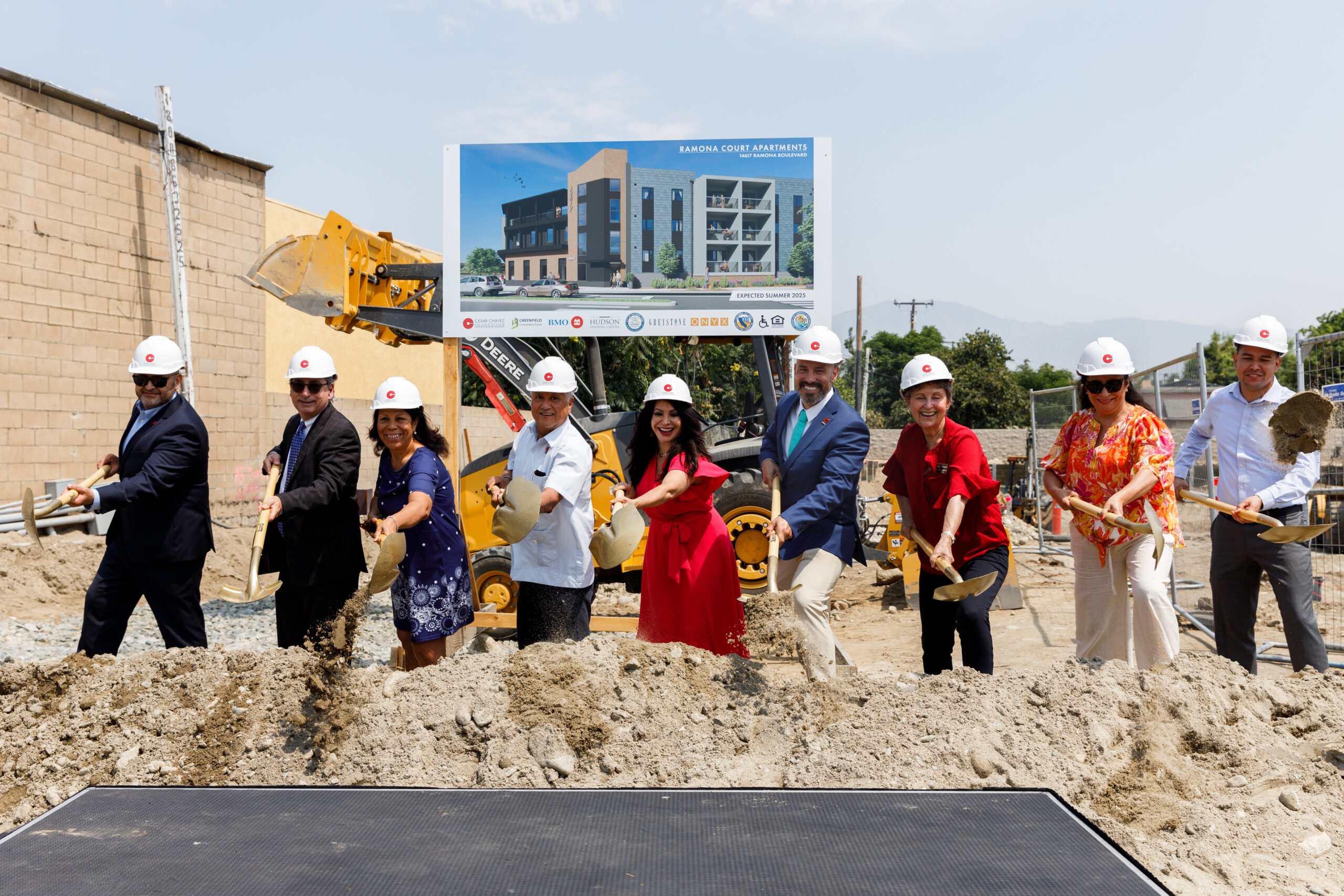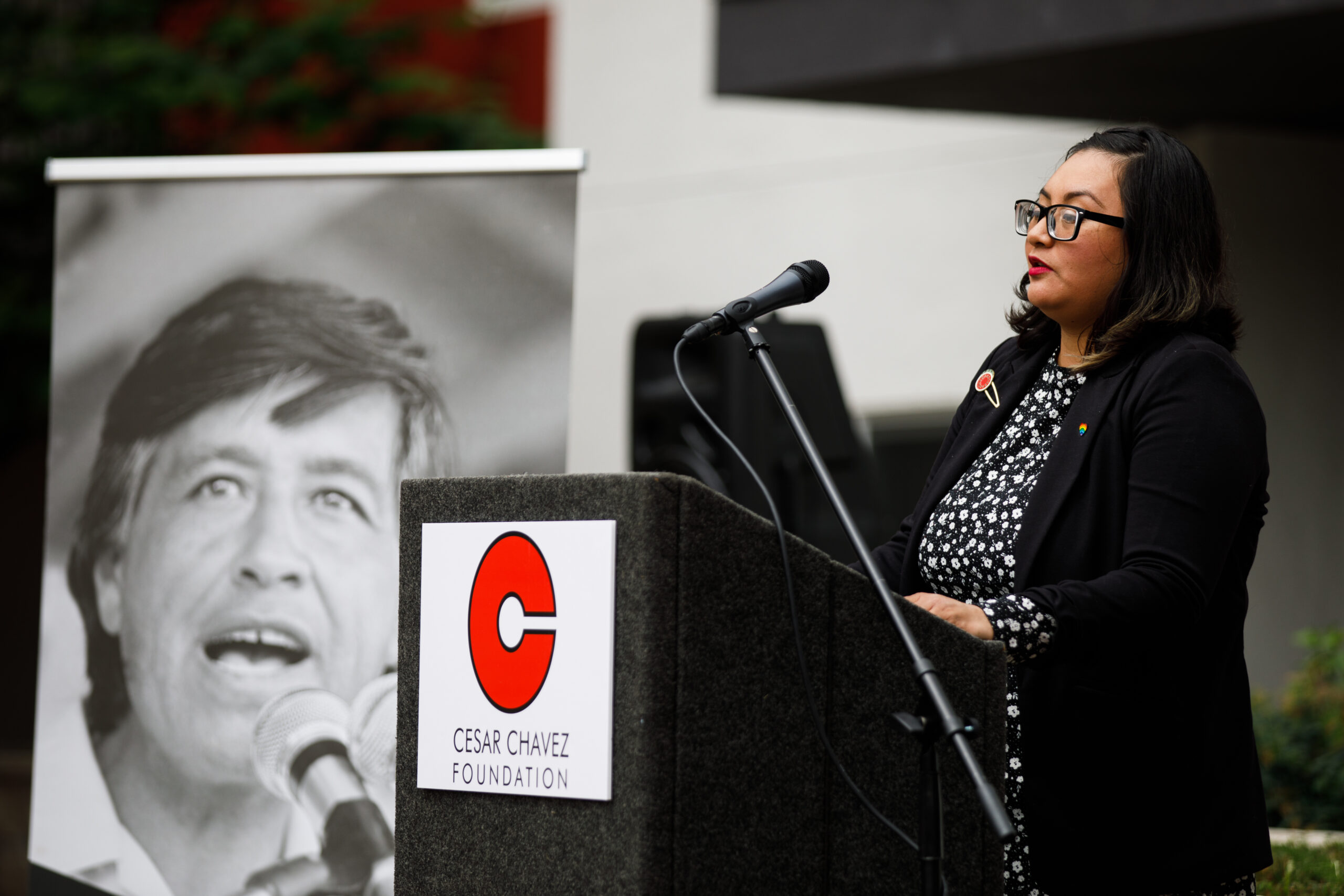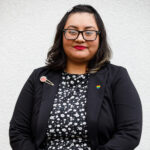Houston, TX – The Cesar Chavez Foundation, in partnership with Harris County Housing & Community Development, the Harris County Redevelopment Authority, and the Harris County Housing Finance Corporation, celebrated the start of new construction for much-needed affordable housing.
The contributions of this partnership will allow the Cesar Chavez Foundation, a vertically integrated nonprofit developer, to develop, construct, and operate the properties and maintain its affordability in perpetuity, as it does with all its properties. In keeping with CCF’s tradition, the housing communities are named after local civil rights champions. Construction is expected to be completed by December 2026.
“These projects are a critical addition to Houston, and we are honored to provide affordable housing for families and seniors in need. It’s fitting to name these properties after Frumencio Reyes Jr. and Felix Z. Fraga as a tribute to their relentless efforts and positive impact on the local community,” said Manuel Bernal, President of the Cesar Chavez Foundation. “Our mission is to uplift working families, and these developments represent a major advancement towards fulfilling that mission. Frumencio and Felix embodied Cesar Chavez’s values of social justice and community empowerment, and their dedication to creating lasting change continues to inspire us.”
The Urban Edge reported that “There are just over 33,000 affordable and available places to rent for the more than 217,000 extremely low-income renters in the area. About 83% of extremely low-income households are severely cost-burdened. The Kinder Institute for Urban Research’s 2023 State of Housing in Harris County and Houston report found that from 2015 to 2021, monthly rent prices outpaced median household income increases.”
“Harris County Housing & Community Development (HCD) is proud to partner alongside the Cesar Chavez Foundation, Harris County Redevelopment Authority, and the Harris County Housing Finance Corporation to provide vital affordable housing to low-to-moderate-income households. These projects will forever change the lives of many people who will benefit from stable, affordable housing in Harris County. The impact of providing affordable housing in Harris County is felt throughout the entire community and will have lasting effects for many years to come,” says Thao Costis, Executive Director of Harris County Housing & Community Development.
HCD has played a pivotal role in securing and investing in affordable housing for the underserved residents of Harris County. To date, HCD has contributed about $360 million in American Rescue Plan Act (ARPA) and Community Development Block Grants – Disaster Recovery funds toward safe, affordable multi-housing projects in Harris County. It continues to make strides to invest in affordable housing, so no underserved residents are left behind.
Villa Eterna Sonrisa Felix Z. Fraga Details:
The Villa Eterna Sonrisa Felix Z. Fraga is a new construction, senior-focused (55 years old +) apartment building that will contain 99 units: 98 one-bedroom units designated for seniors and one two-bedroom unit for the property manager. The development will be a four-story elevator building located at the intersection of Tidwell Road and Bauman Road in the city of Houston and Harris County Precinct 2. The site is conveniently located near an accessible bus stop between I-45 and I-69. The property will include a Si Se Puede Senior Center.
Frumencio Reyes Jr. Plaza Details:
The Frumencio Reyes Jr. Plaza is a new affordable apartment building that will consist of 120 units. The building will offer a variety of unit types, including efficiency, studio, one, two, and three-bedroom apartments, which will be affordable for individuals with incomes at 30, 50, 60, and 80 percent of the area median income. The development will be a four-story elevator building located at the intersection of Upland Drive and Timberline Road in the Spring Branch neighborhood in the City of Houston and Precinct 4 of Harris County. The site is conveniently located near I-10 and Sam Houston Tollway, providing easy access to the rest of the city. It is also located near a mix of single-family homes, multi-family developments, schools, bus stops, and services. The property will include a Si Se Puede Learning Center.
About Cesar Chavez Foundation
At the Cesar Chavez Foundation, our mission is to carry on Cesar’s life’s work of uplifting the lives of Latinos and working families by inspiring and transforming communities through social enterprises that address essential human, cultural, and community needs. The National Chavez Center, an arm of the Chavez Foundation, promotes and preserves the legacy of Cesar Chavez across the nation and manages historical properties near Delano and at Keene, Calif., home to the César E. Chávez National Monument. Follow the Chavez Foundation on LinkedIn, Facebook, Instagram, YouTube, and X. For more information, visit chavezfoundation.org.
About Harris County Housing & Community Development
Harris County Housing & Community Development strives to strengthen communities by investing in housing, infrastructure, and services that promote resiliency. It seeks to have safe, sustainable communities where everyone thrives and no one is left behind. Learn more at hcd.harriscountytx.gov.
About Harris County Redevelopment Authority
The Harris County Redevelopment Authority (HCRDA) promotes, encourages and facilitates economic development, community investment, infrastructure investment and revitalization programs on behalf of the County. The HCRDA is the corporate operating entity for the County-led Greater Houston TIRZ (TIRZ 24), which encompasses approximately 8,000 acres.
About Harris County Housing Finance Corporation
The Harris County Housing Finance Corporation (HCHFC) creates affordable housing opportunities for the citizens of Harris County. The Corporation is authorized to issue debt for the purpose of supporting affordable single-family home mortgages or interests and providing financing for multi-family housing projects for low and moderate-income owners. The Corporation is led by a nine-member Board of Directors appointed by Harris County Commissioners Court.










 “Living in Plaza Ortiz has positively changed my family’s life. Our new home has brought us closer together and provided great educational and healthcare opportunities. The community is welcoming, and the secure apartments give us peace of mind. Having my mother close by has been a great support. Moving here has allowed me to focus on my studies and has brought us new opportunities and support. I highly recommend Plaza Ortiz to anyone looking for a welcoming community, better educational opportunities, and improved healthcare access.”
“Living in Plaza Ortiz has positively changed my family’s life. Our new home has brought us closer together and provided great educational and healthcare opportunities. The community is welcoming, and the secure apartments give us peace of mind. Having my mother close by has been a great support. Moving here has allowed me to focus on my studies and has brought us new opportunities and support. I highly recommend Plaza Ortiz to anyone looking for a welcoming community, better educational opportunities, and improved healthcare access.”